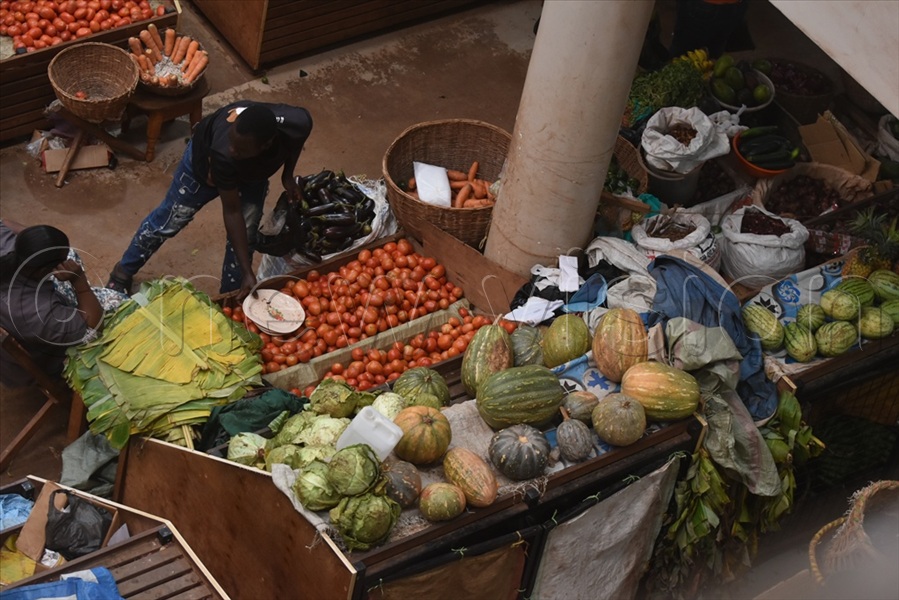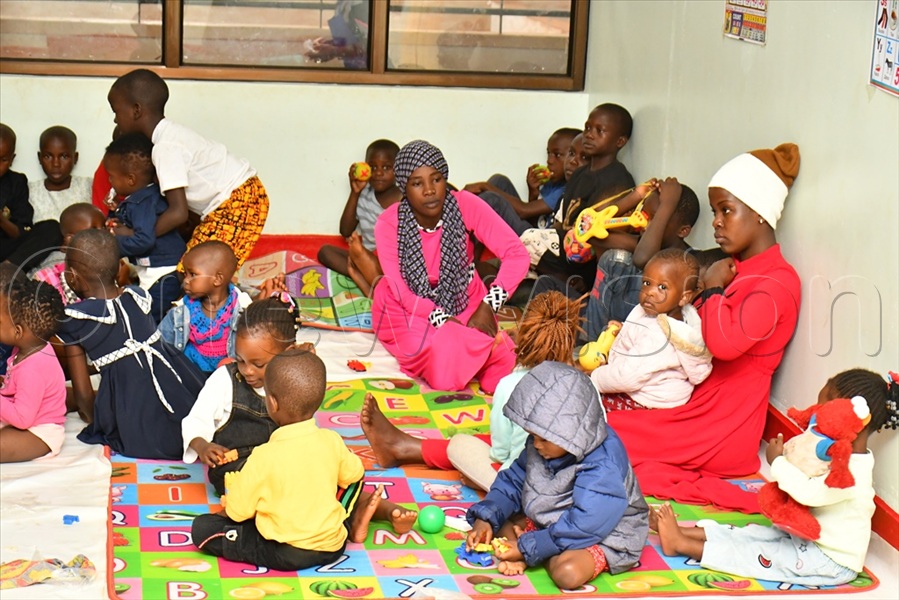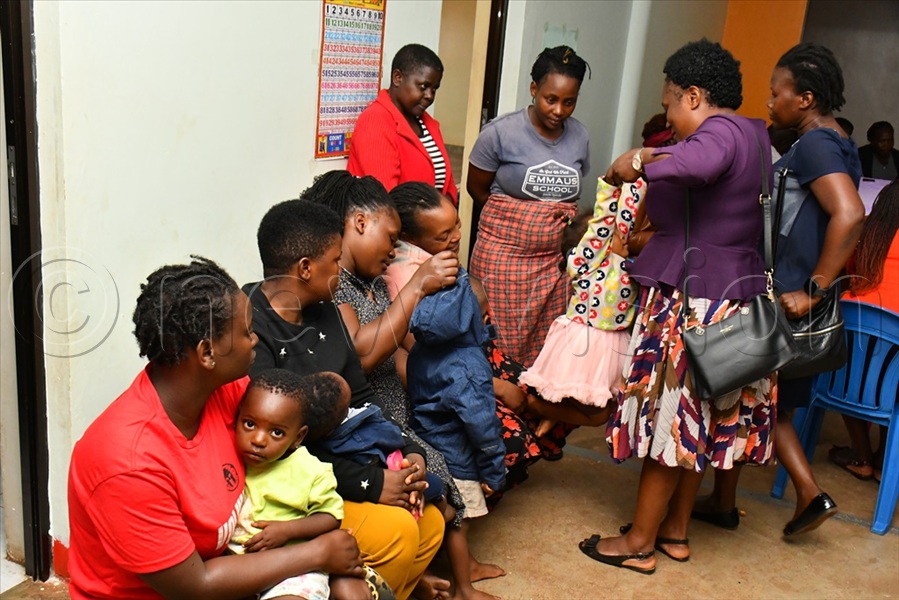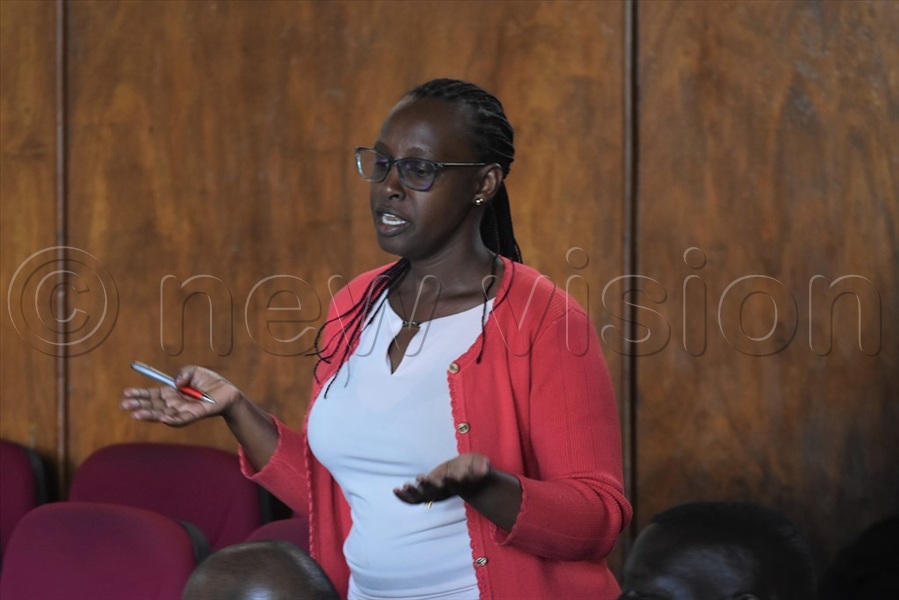MATIP: Market childcare facilities abandoned
Vendors like Mary Akulo, are struggling to balance work and look after their children at the same time. “We need the services, but we do not have the facilities,” she says.
Officials from MoLG and MoGLSD and others from Jinja, Lugazi, Kamuli, Iganga, Mayuge and Mbale after visiting childcare facilities in Luganzi MATIP market. (Credit: Davis Buyondo)
Around mid-morning, Gulu central market is lively with busy vendors, mostly women, calling out prices and buyers.
Inside the market, they carefully sort and arrange fresh tomatoes, beans, a colourful variety of spices and fruits across their stalls.
However, there’s something that immediately draws attention. Many women (vendors) work with babies strapped to their backs, while others leave their little ones to wander between stalls and the busy market aisles.
Vendors like Mary Akulo, are struggling to balance work and look after their children at the same time. “We need the services, but we do not have the facilities,” she says.
Inside the market, vendors carefully sort and arrange fresh tomatoes, beans, a colourful variety of spices and fruits across their stalls. (All Photos by Davis Buyondo)
She adds that children keep wandering in the market, messing up people’s items, which inconveniences them.
The same struggles are observed in other public markets across the country, including those in Lira, Jinja, Lugazi, Kamuli, Iganga, Mayuge and Mbale.
This situation undermines the government’s program to enhance women’s participation in the country’s economic empowerment and early childhood development, as stipulated in the National Development Plan (NDP IV).
A vision once worked
Over a decade ago, the government introduced measures to improve women's working conditions by revamping existing public markets.
Through the Markets and Agricultural Trade Improvement Program (MATIP I&II), the government transformed 21 markets across the country.

Some of the caretakers at the Lugazi central market day care centre.
In these MATIP markets, stalls and sanitation facilities were upgraded and childcare facilities established. They were designed with sleeping rooms, indoor play spaces and kitchens, while some, like in Gulu, feature playgrounds within the market premises.
Parents pay a modest daily fee of sh2,000 for meals and care provided for their children. This was meant to help women have secure and affordable places to leave their children while they concentrate on their businesses during market hours.
With this, mothers could trade more productively and earn more income for better livelihoods.
Lugazi Model Facility, where it works
Lugazi facility is exceptional, being fully operational and currently caring for over 20 children, mainly aged 0-5 years. Two caretakers look after the little ones from morning until evening, offering mothers a chance to focus on their work.
For smooth operation, caretakers explained, parents who cannot afford to pay in cash often contribute food items instead.

Jinja Cental Market
According to one mother, she can work without worry because of the childcare facility. “Before, I would waste most of the time running back and forth to check on my baby at home,” she recounted.
According to Bob Mudduse, the Lugazi Central Market Manager, this arrangement simplifies life for parents. “It further encourages others to bring their children to the childcare facility,” he added.
Where facilities failed
In Gulu, the childcare centre is currently non-functional, having been repurposed as a one-stop centre for URSB, Tax Registration Expansion Program (TREP) and partner agencies, leaving a significant gap for market vendors.
In Lira, the facility is also vacant, having been leased to a motorcycle company (Simba Automotives) as a store and office.
George Omondi, the Lira Central Market Manager, said they recently reclaimed the facility and are currently looking for the service provider to make it operational.
“It still requires revamping, playing items, and proper management before it can become fully operational,” he said.

Lugazi market vendors visiting the daycare centre during the joint field visit.
The Mbale facility has been functional since 2017, managed by a private provider, Grace Odoi, in partnership with the City Council.
It demonstrates a workable model based on modest fees and community involvement, but still faces challenges of limited space, inadequate city council support, and insufficient infrastructure.
For Jinja, Kamuli, Iganga, and Mayuge, it’s a complete failure as the childcare facilities are also empty.
Gov’t intervenes
Following recent monitoring visits in Northern and Eastern Uganda, the Ministry of Local Government (MoLG) and the Ministry of Gender, Labour and Social Development (MoGLSD) launched a campaign to revive dormant childcare facilities in these markets.
They engaged local leaders, market managers, childcare operators, town clerks, labour officers, Community Development Officers (CDOs) and other stakeholders to identify challenges, share lessons and develop recommendations for strengthening childcare services in MATIP markets.

Commissioner, Peter Jeje, the National Programme Coordinator for MATIP in the MGLSD, addressing stakeholders in Mbale.
Commissioner - Peter Jeje, the MATIP National Coordinator at the Ministry of Local Government, emphasised the importance of Early Childhood Development (ECD) in promoting child wellbeing, gender equality and boosting household incomes and the country’s sustainable economic growth.
He noted that childcare facilities are not just for profit-making but a strategic investment in the country’s human capital.
According to Rogers Golooba, the Senior Probation and Welfare Officer at MoGLSD, several parents often resort to unsafe and risky childcare strategies, such as leaving their children at home unattended.
“To solve this, we humbly suggest that apart from childcare facilities in MATIP markets, working parents should also use other childcare centres within their communities," he said.
However, with 45% of the population under 15 years in addition to the rapid growth rate of 2.7%, Golloba said the need for childcare services is growing steadily.
Regarding childcare financing, Golooba highlighted that the GROW Childcare Grant offers up to USD40,000 for qualified childcare centres.

Patience Kaitesi, the Senior Youth Officer, from the MGLSD, explaining to stakeholders in Mbale the importance of childcare facilities in Mbale Market.
Unlike loans, he added, these grants are meant to strengthen these facilities and enable their operators to deliver affordable and sustainable services without burdening families.
Human Side, Policy
According to the caretakers of Lugazi, every parent must register their details with the facility for close monitoring and security purposes. “A parent who brings a child to the day care is the one to pick them up in the evening,” a caretaker explained.
Jane Francis Aceng, a vendor in Lira central market, explained that the challenge of cost pressures leaves many parents struggling to pay Sh2,000, yet these childcare facilities survive solely on user fees.
Mary Achieng Agoya, a shoe maker in Gulu Central Market, says the facilities fail due to weak governance, whereby different operators work without formal agreements with the city council authorities.
“However, this leaves them more vulnerable to sudden eviction and sudden changes,” she added.
However, Gulu City CDO -Geoffrey Lakwonyero further attributes the stallment to the failure to identify competent service providers to run childcare facilities and the design errors in both MATIP Projects (MATIP I & II).

Rogers Golooba, the Senior Probation and Welfare Officer, MGLSD, addressing stakeholders in Jinja.
Statistics, appeal
According to Patience Kaitesi, the Senior Youth Officer at MoGLSD, one in every three children is left at home alone, which can change if parents utilise existing childcare spaces.
She further advised that these facilities should not only look after children but also go the extra mile to provide proper meals, keep them safe, teach them basic skills, and monitor their health.
“If Uganda changed “the beginning of the story” by prioritising early childhood care and development, it would change the future trajectory of its people and the nation,” she stressed.